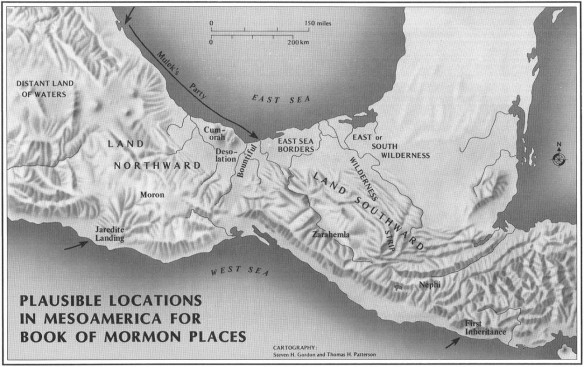Moksha wrote: ↑Sun Oct 09, 2022 9:46 am
So this story later became babelfied by subsequent Latter-day Saints and apologists into some nonsense about Mesoamerica?
The Americanization of the narrative started somewhere between Martin Harris as scribe and Oliver Cowdery as scribe. My take is that when Samuel Mitchell had told Martin Harris that the reformed egyptian characters on the transcript were of a nation now extinct in the east, he identified that nation as Malay or Australasian. I won't offer a detailed explanation here because Richard Bennet explains better than I could
here.
So let's say Samuel Mitchell had told Martin Harris that the "nation now extinct" was Malay, or what we call today Polynesian. This is where things get interesting.
Remember how the earliest accounts of Book of Mormon geography claim that the Lehites landed "a little south of the Isthmus of Darien"? Lo behold, an account given by Samuel Mitchell as supporting evidence of his theory that the Indians of New York State were Malay:
“Soon after the arrival of these rolls from New Spain, filled with hieroglyphic and imitative characters, I received a visit from three natives of South America, born at St. Blas,
just beyond the Isthmus of Darien, on the eastern side, between Portobello and Carthagena…They were of the Malay race, by their physiognomy, form and general appearance.” - Samuel Mitchill
Its possible that Samuel Mitchell had mentioned these natives from the Isthmus of Darien as he explained his theory of Polynesian Native Americans to Martin Harris, and if not, it
had been published in 1820 and was available to anyone curious about the current theories of Native American origins.
I propose that Martin Harris, Joseph Smith and other early Saints were aware of Mitchell's theories about Native American origins and his suggestion that there had been a great final battle of extinction in Onandaga County, only around 40 miles from the Hill Cumorah. The early Saints were adjusting the narrative to account for Nephites and Lamanites as new evidence emerged. For example, Orson Pratt continued to riff on Mitchell's theory in 1840 (
source):
"A great and terrible war commenced between them, which lasted for many years, and resulted in the complete overthrow and destruction of the Nephites. This war commenced at the Isthmus of Darien, and was very destructive to both nations for many years. At length, the Nephites were driven before their enemies, a great distance to the north, and north-east; and having gathered their whole nation together, both men, women, and children, they encamped on, and round about the hill Cumorah, where the records were found, which is in the State of New York."
I suppose the thinking was, if the narrative was aligned as close as possible to the leading theories of the day, it would be more believable. This explains why Joseph appears to totally fumble the Zelph story by introducing characters that don't even appear in the Book of Mormon. The account of Zelph the White Lamanite fighting for the Prophet Onandagus was not intended as a way to align the evidence with the Book of Mormon but rather a way to align the Book of Mormon storyline with Mitchell's theory that fair skinned tartars had driven the Malay to extinction in Onandaga County.



